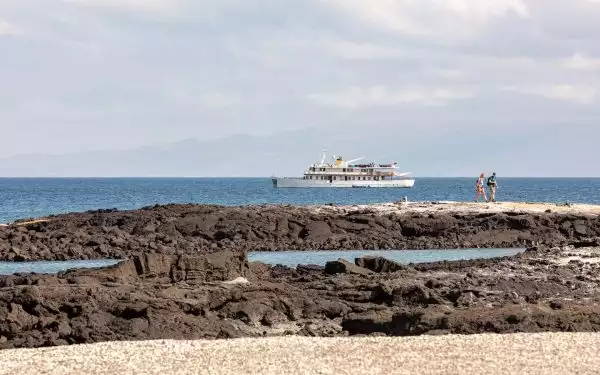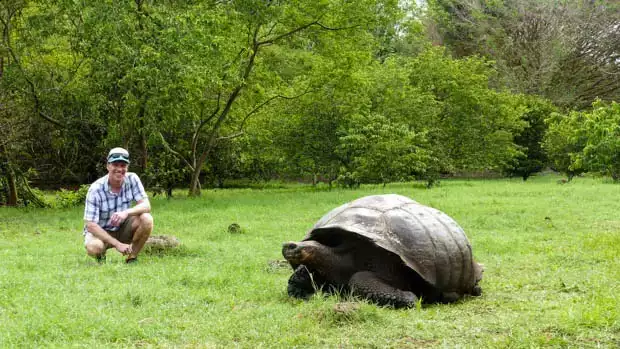
AT YOUR SERVICE
One-on-one travel conversations
with our experts who’ve been.
Get a free consultation today.
Learn More
Galapagos Islands Cruises
with AdventureSmith
Let our bright and insightful crew be your guide to a Galapagos Islands cruise. We offer the confidence of booking with a licensed, insured and award-winning US-based company that understands your questions, concerns and needs. Need more reasons to book with us?
Personalized Adventures
Work with one USA-based specialist to research, purchase & prepare.
Select Your Cruises
An unmatched selection of small Galapagos cruises aboard 25+ expedition ships.
Experienced Guides
Expert naturalist guides, certified by the National Park, lead excursions aboard every cruise.
Added Value
Secure deals with our insight & partnerships. We’re here to help you save on your Galapagos Island cruise.

All You Need for a Galapagos Islands Cruise
AdventureSmith Explorations sends hundreds of passengers on Galapagos Islands cruises each year. And our company founder, Todd Smith, is an elected board member of the International Galapagos Tour Operators Association. We’re known for our unbiased knowledge and personal experience aboard small ship Galapagos Island cruises. Trust us to take you there.
How to Choose the Best Galapagos Cruise?
Our experts have years of experience answering this question and booking travelers on the best Galapagos cruises for their interests, ability and budget. To find your own best, navigate to our top tips below. Or call us any time. We are here to help get you booked on the best Galapagos cruise. In no particular order, here’s how:
- Find your best itinerary (read our tips or view them all)
- Pick your ship
- Choose when to go
- Consider your special interests & available offers
- Talk to a Galapagos expert or past traveler
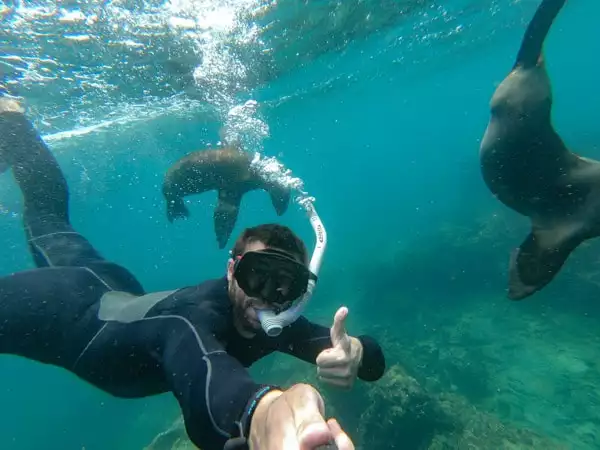
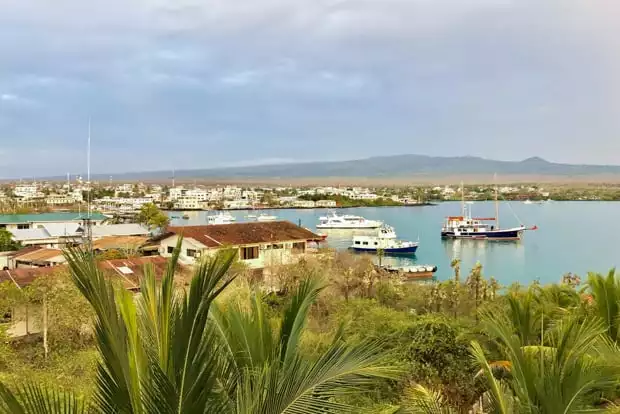
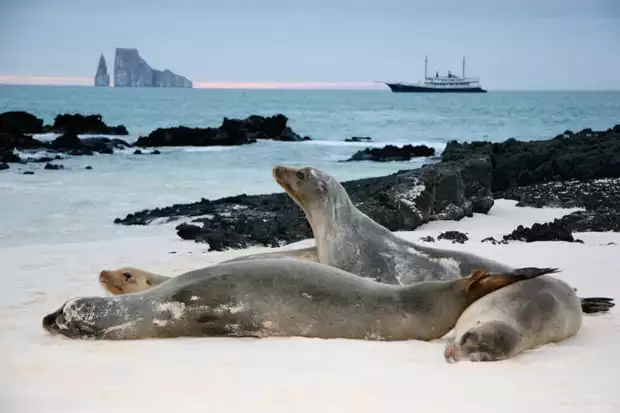
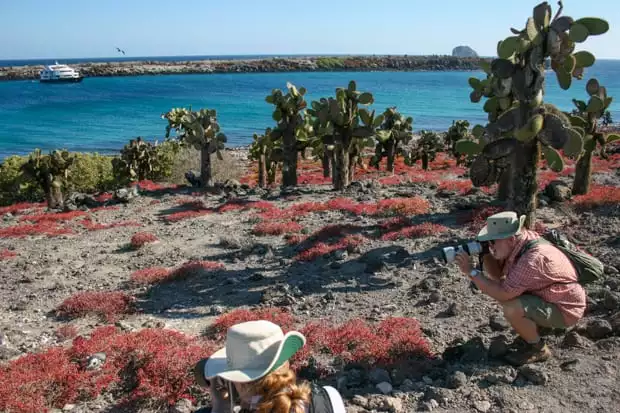
Galapagos Cruise FAQ
Have a question about Galapagos Islands cruises? We have an answer. We’ve compiled our most frequently asked Galapagos cruise questions here to inform and inspire your research into this enchanted archipelago. Read this Galapagos FAQ to find out if your burning question is a common one, or contact one of our specialists anytime to ask an expert directly.
What is the best Galapagos cruise?
Choosing a longer Galapagos cruise is a good way to ensure you’re seeing the most species. If you choose an itinerary fewer than 6 or 8 days, carefully consider what islands and experiences are important to you. Shorter cruises will inevitably miss out on some species. Read more in our comprehensive guide on choosing the best Galapagos cruise itinerary.
How do I best compare Galapagos cruises?
Ship size (from 12 to 100 passengers), amenities aboard and islands/sites visited are some of the best ways to compare Galapagos Islands cruises. Our experts can lead the way to help you make the selection process fun.
What are the best Galapagos boats?
The best Galapagos ships match your interests. We’ve tested the top ships and can help matchmake you with the best choice for you. Galapagos luxury cruise seekers often gravitate toward the Galapagos Origin, Evolove & Theory for their prestigious Relais & Châteaux association, but there are newer up and comers to consider. And families often consider ships like the Legend, Santa Cruz II, Coral yachts or other Galapagos family favorites to be the best. View all Galapagos cruise ships to learn more.
What Galapagos cruises have scuba diving?
Consult our list of small ship cruises with scuba diving for details on what to expect if you’re seeking to dive on a cruise to Galapagos.
What is the best month for viewing animals?
If native animals are your focus, consider what stage of life and which species you’d like to witness the most. For example, some species actively breed in August while others are birthing or hatching at that time. Your ideal time of year to take a Galapagos Islands cruise may depend on what interests you the most, from giant tortoises to marine iguanas. While no species are guaranteed to be seen, one of our Adventure Specialists can guide you through which month is right for you. Our Galapagos Islands animals and Galapagos by Month: When to Go & Why blog are also great guides, outlining which animals are doing what when.
Is Galapagos cruising too difficult for someone in their 70s?
No! If the Galapagos Islands are on your bucket list, do not let age deter you. Our Adventure Specialists are happy to discuss mobility levels and which ships are most accommodating for specific travelers’ needs.
What cruise lines go to the Galapagos Islands?
We partner with 13 Galapagos cruise lines operating more than 25 ships. Some names you may recognize as global cruise lines (Lindblad Expeditions). Others are specific to the Galapagos Islands (Enchanted Expeditions). Most ships that sail in the Galapagos remain year-round.
Are triple cabins available on Galapagos Islands cruises?
Yes. Our Adventure Specialists are well versed in the different cabin configurations and can talk you through the options for triple cabins, quadruple cabins and single cabins.
Should I be prepared for motion sickness on a Galapagos Island cruise?
The Galapagos is known for fairly mellow seas and smooth sailing, but it’s always good to be prepared. Check out our How to Prevent & Treat Seasickness guide. If you are extremely susceptible, you can consider your route choice and months of travel to choose more protected waters and avoid months known for more tradewinds (June through November). Learn more about the best time to visit Galapagos.
Are small children under age 2 allowed on Galapagos cruises?
Yes, but it depends on the ship. Each Galapagos cruise line has its own policies regarding young children, and many have minimum or recommended minimum ages. Our Galapagos family cruises page offers more insight on recommended ages.
If I don’t snorkel on a Galapagos cruise, will I miss out?
Snorkeling is indeed an integral part of a Galapagos Islands cruise and is offered most days, along with Zodiac rides. If you are not able to snorkel, consider a ship that carries a glass-bottom boat. These specialized watercraft are a great way to see and learn about the underwater wildlife as guides are able to explain what is being seen under the boat (penguins swimming!). Ships with this added activity option will offer the best cruise to the Galapagos for anyone not able to get in the water.
What is the terrain like in the Galapagos Islands?
Terrain varies between sandy beaches, lava rocks and established paths that may be flat or hilly. Naturalist guides are very good at pacing excursions, so guests of all levels can enjoy the wildlife and have plenty of photographic opportunities. Dry landings are on solid surfaces, and wet landings require guests to step from a dinghy into water. But you may always opt out of an excursion or landing, perhaps taking a Zodiac ride with easy coastal wildlife viewing instead.
What should I not miss while on a Galapagos Islands cruise?
For fun insights and must-do’s before and during your Galapagos small ship cruise, check out our Galapagos travel tips. You can make the most of your trip by taking Galapagos Island cruise information straight from our well-traveled crew.
Galapagos Cruises
Temperature & Rainfall
| Month | Jan | Feb | Mar | Apr | May | Jun | Jul | Aug | Sep | Oct | Nov | Dec |
|---|---|---|---|---|---|---|---|---|---|---|---|---|
| Avg. High (F) | 84 | 86 | 88 | 86 | 82 | 78 | 76 | 74 | 76 | 77 | 78 | 80 |
| Avg. Low (F) | 70 | 74 | 77 | 72 | 72 | 68 | 66 | 64 | 62 | 64 | 66 | 68 |
| Avg. Water Temp (F) | 74 | 76 | 76 | 76 | 74 | 74 | 72 | 66 | 68 | 70 | 72 | 74 |
| Avg. Rain |
1.6 | 1.9 | 2.2 | 3.0 | 1.7 | 0.9 | 0.5 | 1.1 | 2.2 | 2.1 | 2.7 | 1.5 |
Galapagos Cruising Year-Round
At the equator, weather is perfect for small ship Galapagos Islands cruises year-round. The climate of Ecuador’s Pacific coast and the Galapagos Islands are almost entirely influenced by the ocean currents, with the warm Panama current arriving from the north December through May and the cool Humboldt and Peru currents descending June through November. Interested in which seasons are best to cruise the Galapagos Islands? Hint: they are ALL amazing, but there are benefits to each month. Get a grasp of the seasonal variations, from wildlife occurrences to water temperature, by reading our Galapagos Climate page and Best Time to Visit Galapagos. Learn more about planning your Galapagos small ship cruise around the weather and wildlife diversity that each season brings.
